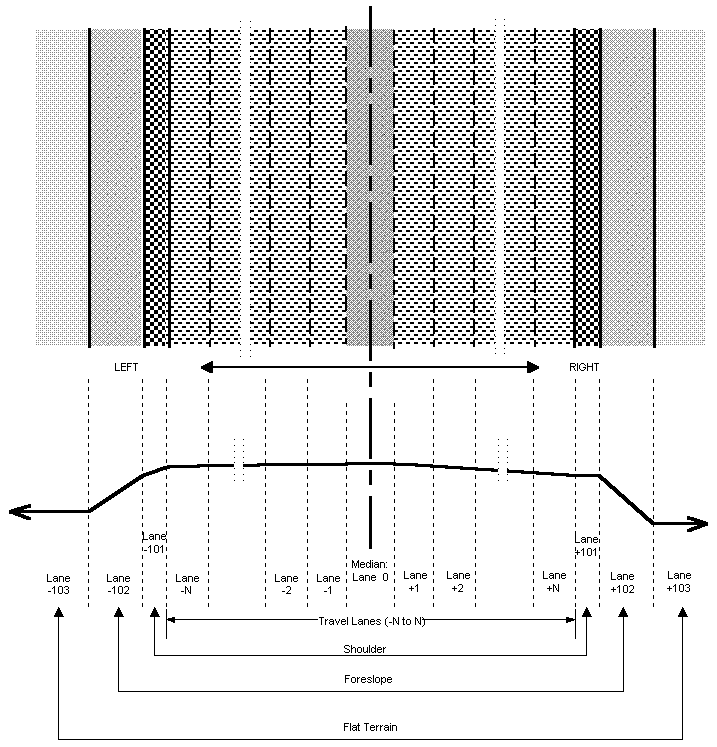STISIM Drive
(SDL) - RSA - Road Surface Attribute
Note: This event has different definitions for simple and complex dynamic systems.
The Road Surface Attribute event "RSA" is used to assign an attribute number to a section of the roadway. Attribute numbers are used to tell the vehicle simulation which set of tire parameters to use for a particular roadway section. The RSA has two parameters: a lane number (see figure), and an attribute number. Initially, all lanes are set to attribute number 0, which tells the simulation to use its standard tire parameters. If a lane has its attribute number changed, it retains the new attribute number until a new value is set. Tire parameters for each attribute number are defined in the Tire Attribute File.
EVENT PARAMETERS:
|
PARAMETERS 1, 3, 5, .....: |
Desired lane number(s) that will have their surface attribute changed. See the accompanying figure for a complete list of the various lanes. |
|
PARAMETERS 2, 4, 6, .....: |
This parameter is
effected by the type of dynamics that are being used and therefore has a
different definition based on the dynamics: Simple Dynamics: Ten times the surface’s
coefficient of friction. Therefore a value of 3 would mean a friction
coefficient of .3. The nominal friction coefficient is set internally to a
value of .8 (which means setting this parameter to a value of 8 will do
nothing). Therefore values above 8 will mean the vehicle’s tires have more
traction, values below 8 mean that the vehicle’s tires will have less
traction. Advanced Dynamics: New attribute number that will be assigned to the specified lane. This number will then be used with the data contained in the Tire Attribute File to determine which tire characteristics will be used with this new attribute. |
EXAMPLE:
Simple Dynamics:
1000,RSA,1,10,-5,2
1100,RSA,1,8,-5,8
At 1000 feet, the lane 1 coefficient of friction is set to 1 (meaning the tires will have more traction and the car will respond faster to steering inputs) and lane –5 will have a friction coefficient of .2 (this would be like driving on ice). At 1100 feet, the lanes are set back to normal because the friction parameter for both lanes 1 and –5 are set to a value of 8.
Advanced Dynamics:
1000,RSA,1,1,-5,2,101,3
1100,RSA,1,0,-5,1
At 1000 feet, the lane 1 surface is set to type 1, lane –5 is set to type 2, and lane 101 (the right shoulder) is set to type 3. At 1100 feet, lane 1 is returned to type 0, which restores the original tire parameters, lane –5 is set to type 1, and lane 101 remains type 3.
